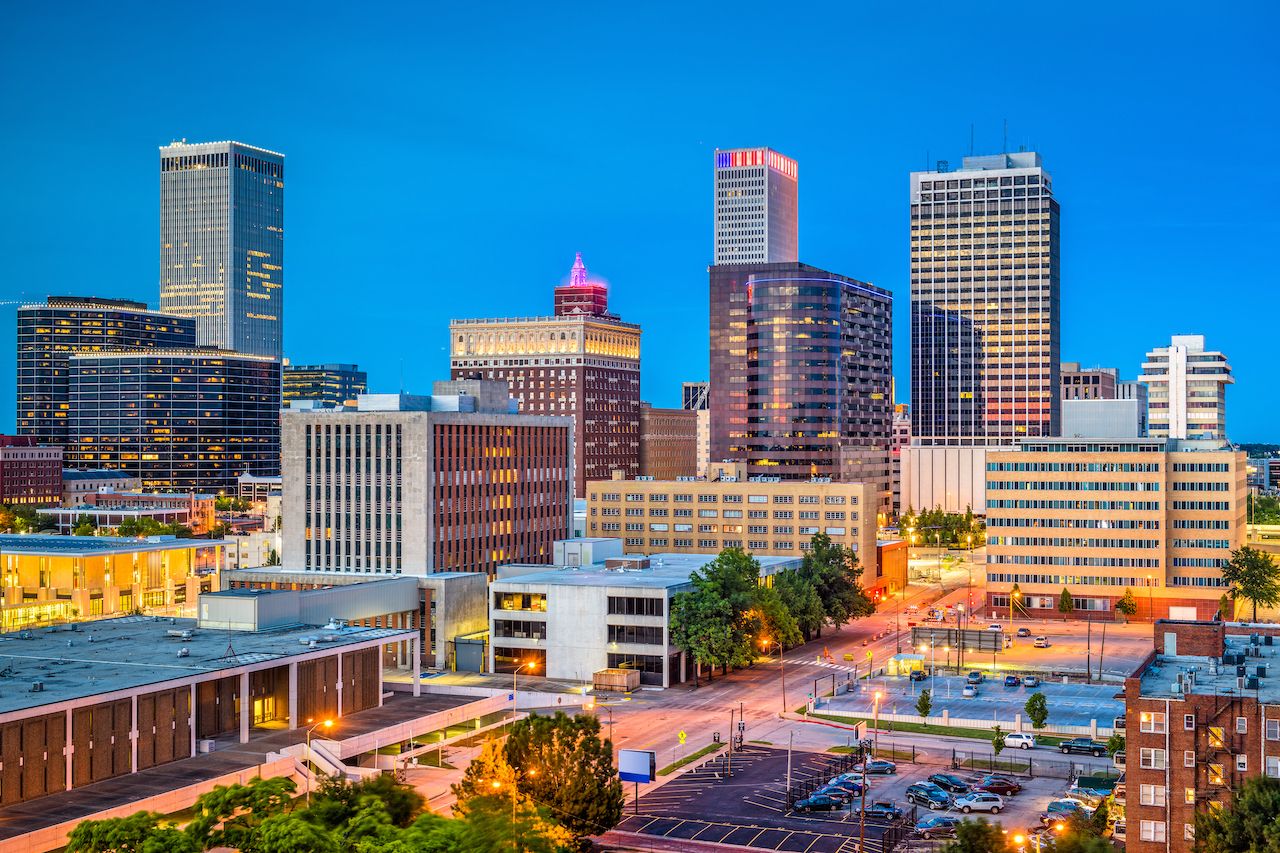
Tulsa, Oklahoma: The Heartbeat of the HeartlandTulsa, Oklahoma: The Heartbeat of the Heartland Nestled amidst the rolling Osage Hills in northeastern Oklahoma, Tulsa is a vibrant metropolis with a rich history and a promising future. A City of Booms and Busts Founded in 1897 as a railroad town, Tulsa experienced a meteoric rise to prominence during the early 20th century oil boom. Known as the “Oil Capital of the World,” the city attracted thousands of workers and investors, fueling its rapid growth. However, the bust that followed the oil price crash of 1929 devastated the economy and left Tulsa reeling. The Race Massacre of 1921 One of the darkest chapters in Tulsa’s history occurred in 1921, when a white mob attacked the prosperous Greenwood District, known as “Black Wall Street.” Hundreds of people were killed, thousands were injured, and homes and businesses were destroyed. The massacre remains a tragic reminder of racial injustice and the resilience of the African American community. A Cultural Renaissance In the decades after the oil bust, Tulsa emerged as a cultural hub. The city is home to the Gilcrease Museum, which boasts a world-renowned collection of Native American and Western art. The Blue Dome District is a thriving arts and entertainment enclave, with live music venues, galleries, and theaters. The Tulsa Ballet is one of the nation’s top-ranked dance companies. Economic Transformation While Tulsa’s oil industry remains significant, the city’s economy has diversified in recent years. Major industries now include aerospace, biotechnology, and financial services. The University of Tulsa and Oklahoma State University-Tulsa are anchors of the city’s thriving education and research sector. A Tapestry of Neighborhoods Tulsa’s neighborhoods offer a diverse range of living experiences. From the charming Victorian homes of the Kendall-Whittier District to the modern high-rises of the Downtown area, there’s a place for everyone. The Brookside and Cherry Street districts are known for their trendy shops and restaurants. A Thriving Arts and Culture Scene Tulsa’s arts and culture scene is vibrant and inclusive. The Tulsa Performing Arts Center hosts Broadway shows, concerts, and dance performances. The Gathering Place, a sprawling riverfront park, offers art installations, playgrounds, and a boathouse. The city’s Music Hall of Fame celebrates the rich musical heritage of Oklahoma and the surrounding region. A Gateway to Adventure Tulsa is a gateway to adventure in the heart of Oklahoma. The nearby Osage Hills offer hiking, biking, and horseback riding trails. Keystone Lake, just a short drive away, provides opportunities for fishing, boating, and water sports. The Arbuckle Mountains, a rugged wilderness area, is home to picturesque lakes and waterfalls. Conclusion Tulsa, Oklahoma, is a city of contrasts and surprises. It’s a place where the scars of the past have been transformed into opportunities for growth and healing. With its thriving arts and culture scene, diversified economy, and welcoming neighborhoods, Tulsa is a heartbeat of the Heartland that continues to pulse with potential.
Tulsa, Oklahoma:
Related Posts
Kate Hudson Recreated Her Iconic How to Lose a Guy in 10 Days Scene During the World Series, and I Can’t Ignore the Fans’ Reaction to It
Kate Hudson isn’t just an award-winning one actress with famous parents; she is also a huge baseball fan. So it’s no surprise that she attended this year’s World Series to…
Software Catalog Unveils Array of Cutting-Edge Solutions for Enterprise Transformation
Software Catalog Unveils Array of Cutting-Edge Solutions for Enterprise TransformationSoftware Catalog Unveils Array of Cutting-Edge Solutions for Enterprise Transformation Technology is rapidly reshaping the business landscape, making it imperative for…